What is it?
A dry mixture similar to decorative plaster or textile fabrics made from cellulose, cotton or silk. They are safe finishing materials that allow walls to breathe.
Types and characteristics
There are two types, each with its own characteristics.
Textile
A more common and familiar type. They consist of two layers – paper and a viscose layer with the addition of cellulose and natural silk fibers. Very durable, do not fade in the sun and are an environmentally friendly material. They look like silk fabric. They can be plain or with a pattern. They are quite expensive, but pay for themselves during use.
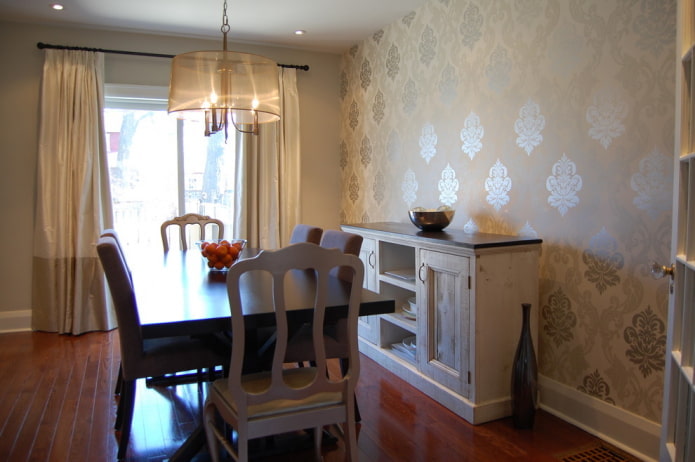
Liquid
A mixture that is diluted with water and applied to walls or ceilings using a spatula or roller, resulting in a seamless coating. Contains only natural silk components. Resistant to mold, mildew and temperature changes.
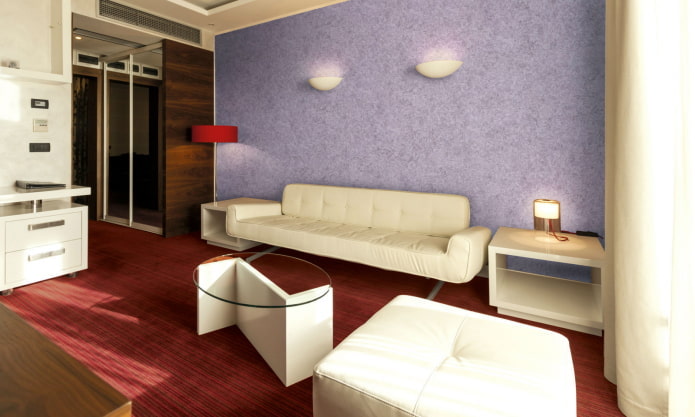
The photo shows a hall with a wall decorated with liquid silk wallpaper.
Pros and cons
Like all other types of wallpaper, silk has its advantages and disadvantages.
Photo ideas in the interior of rooms
An original design option, they look very interesting on the walls and will become a real highlight in any room.
In the kitchen
For kitchens, it is more appropriate to use liquid finishing materials in natural tones: peach or beige. They create a perfectly smooth and thin coating with a light satin shimmer, which visually enlarges the room. This makes them a real find for a small kitchen.
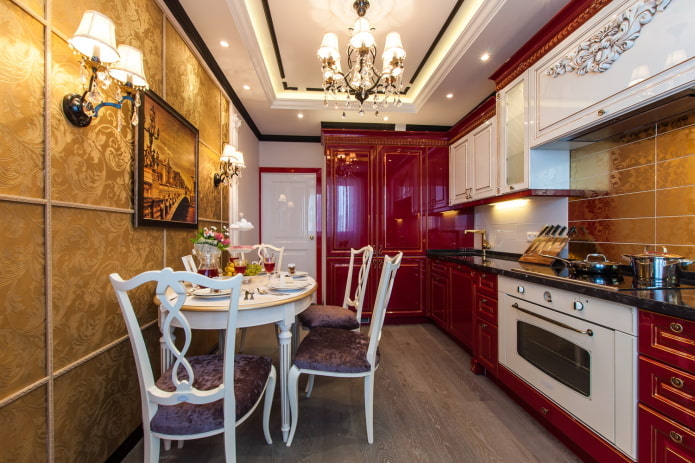
The photo shows the interior of a kitchen decorated with textile wallpaper made of gold silk.
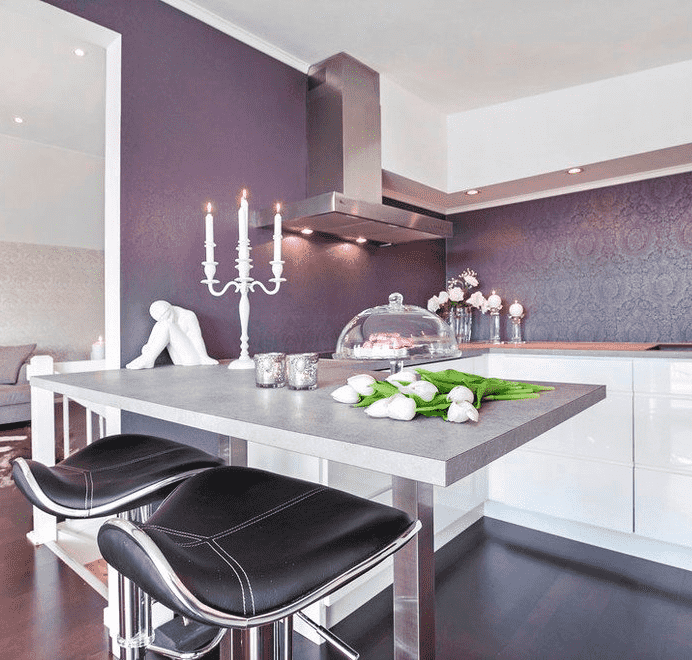
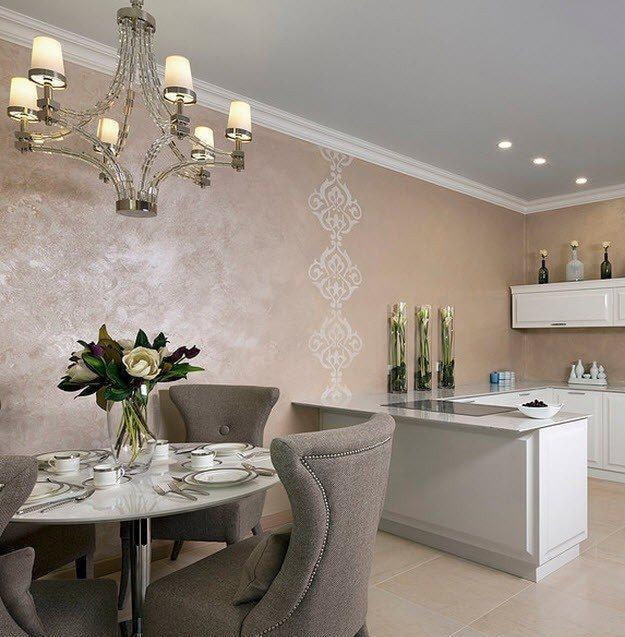
In the living room
More calm beige, sand, olive or soft pink colors will look good. If desired, you can apply a pattern in the form of royal lilies or monograms in gold, silver or burgundy paint. Plain wallpapers are ideally complemented by decorations such as moldings, baguettes or stucco.
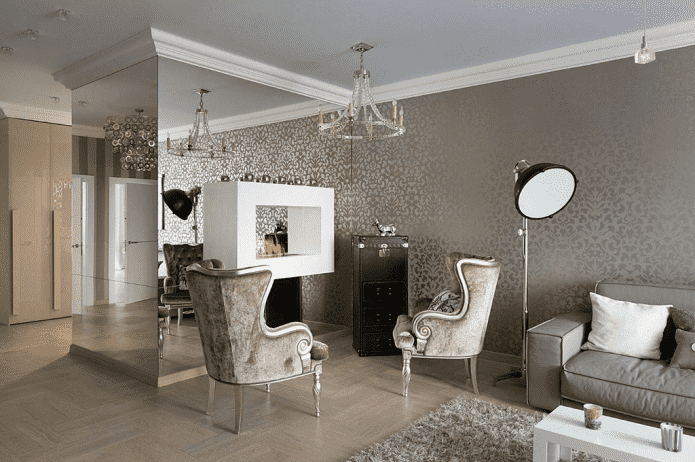
The photo shows a living room with silk textile wallpaper on the walls.
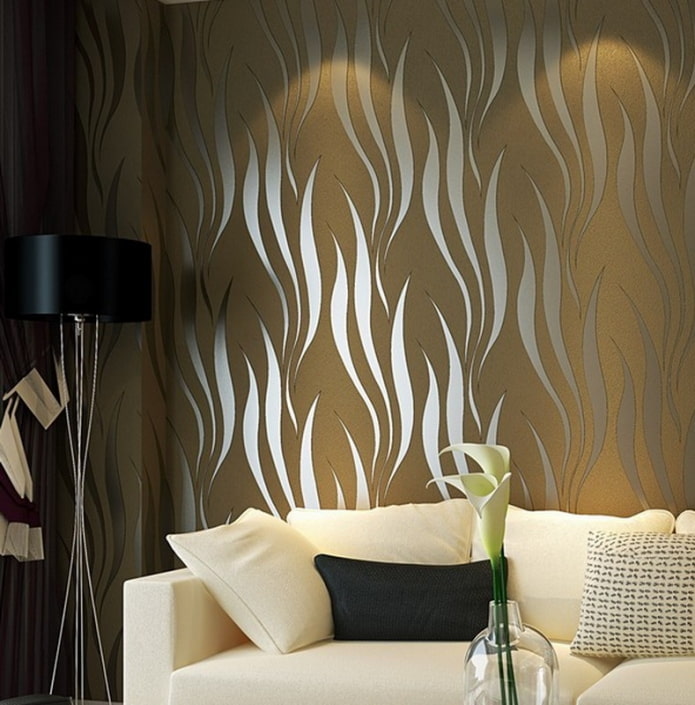
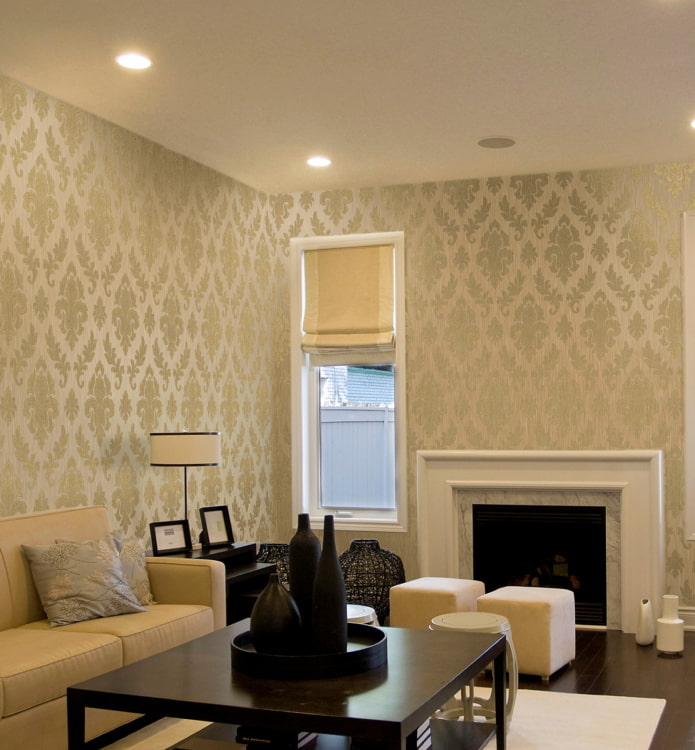
In the bedroom
This finish will add an aristocratic gloss and sophistication to the bedroom design. Decorating the room with this material creates the feeling that the walls are covered with silk fabric. Due to this, the interior turns out to be quite cozy.
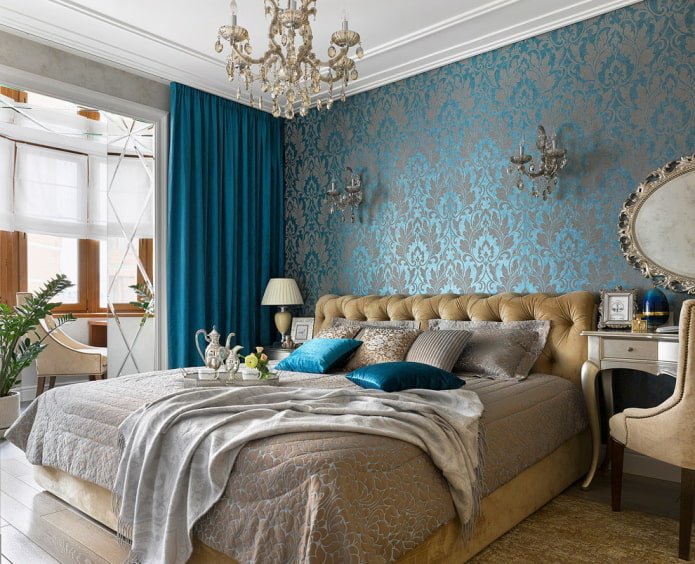
The photo shows a bedroom with patterned turquoise walls.
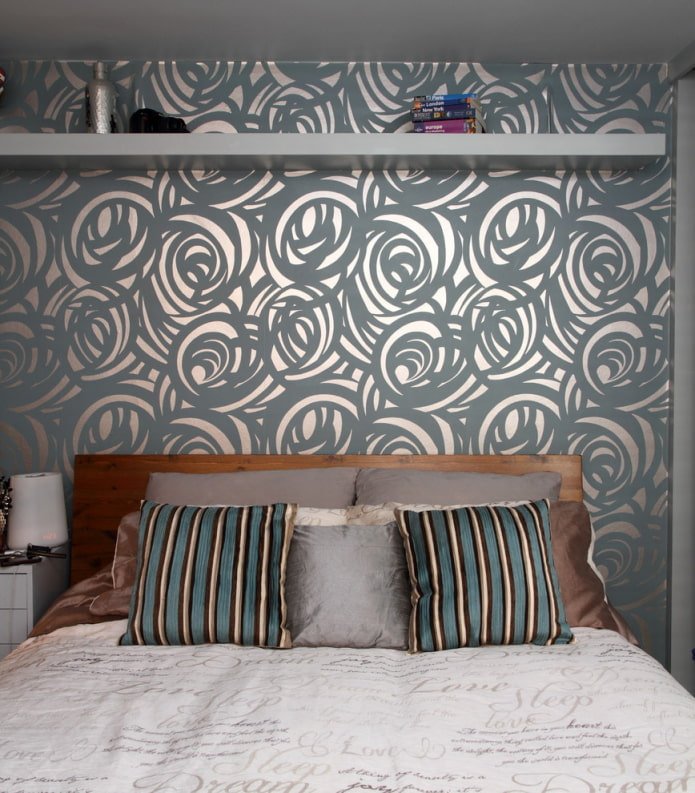
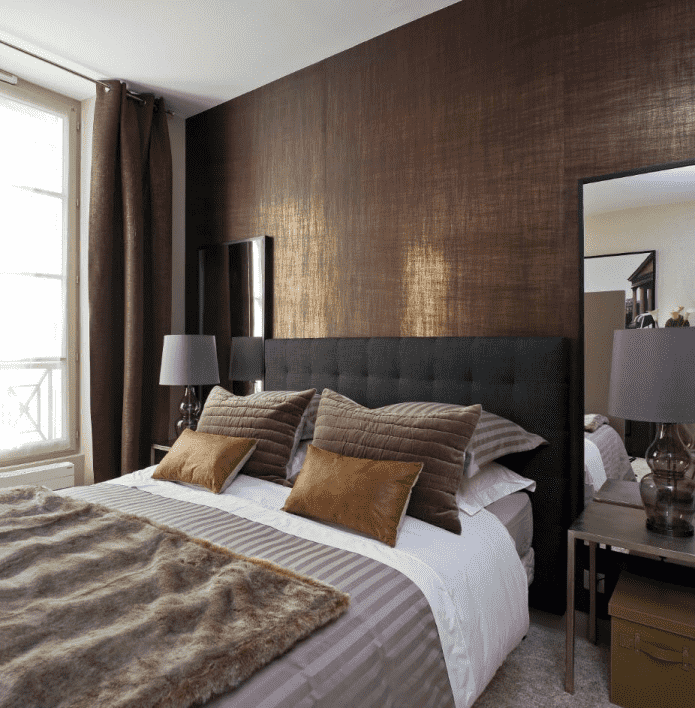
Colors
Colour selection is of primary importance when creating an interior.
White
They increase the space, bring a touch of freshness and purity. White has excellent compatibility with all colours. In order to get rid of the excessive sterility of this color, it is enough to add a few bright accents.
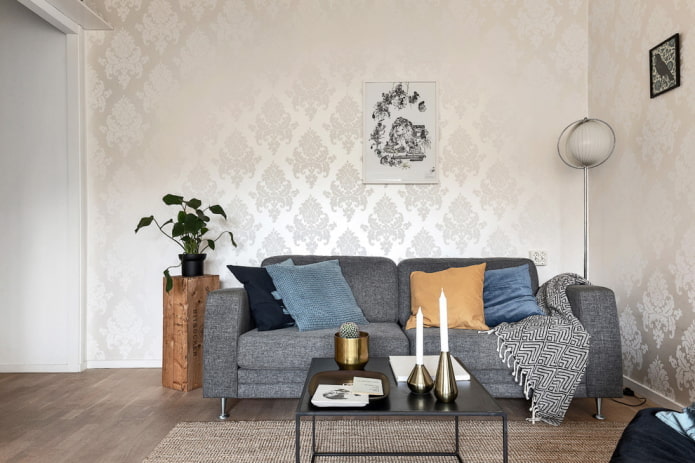
The photo shows the interior of the living room and walls covered with silk wallpaper.
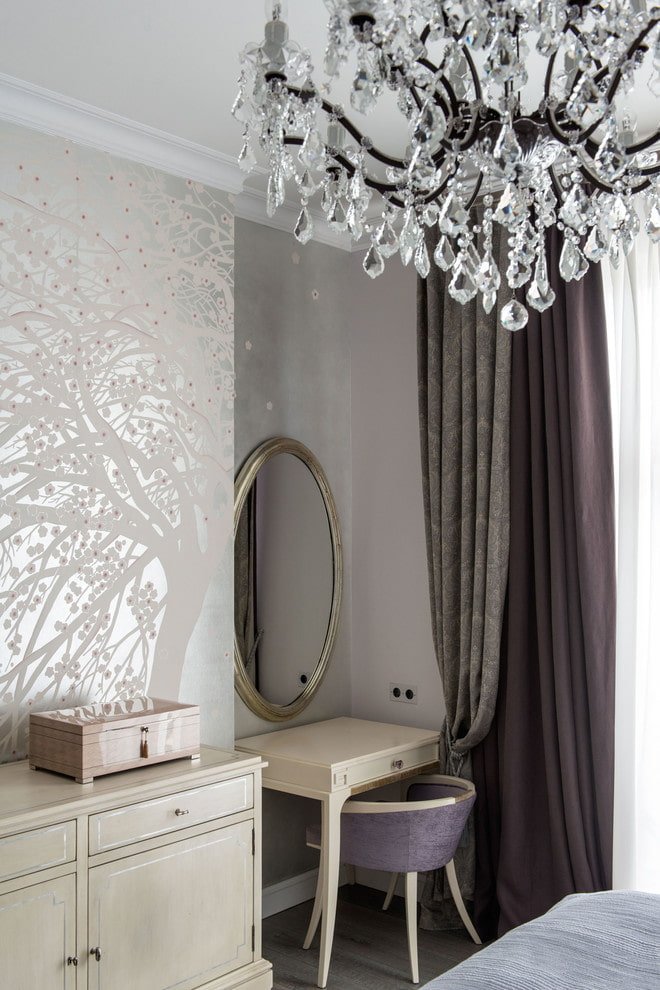
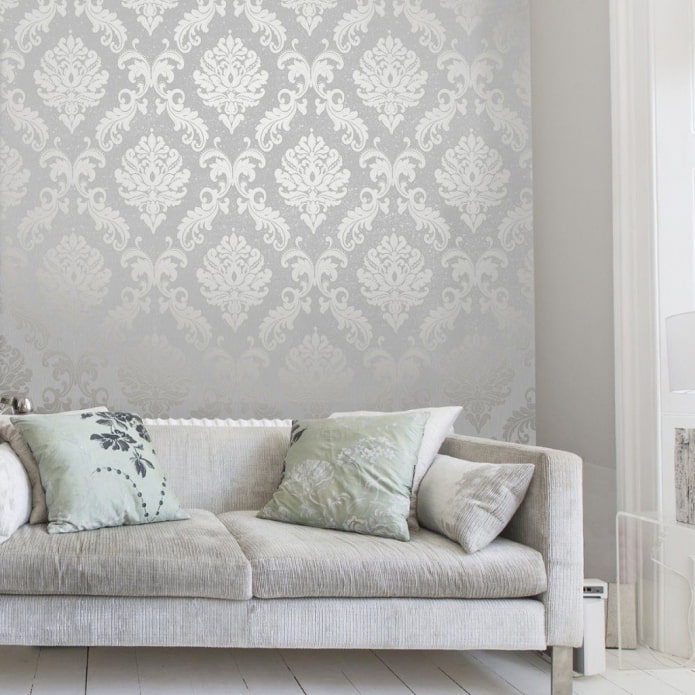
Black
Distinguished by unrivaled graphic quality. Black sets the contrast, enhances, emphasizes and creates a border for other shades in the interior. This color can be used not only as a background, but also to delimit space.
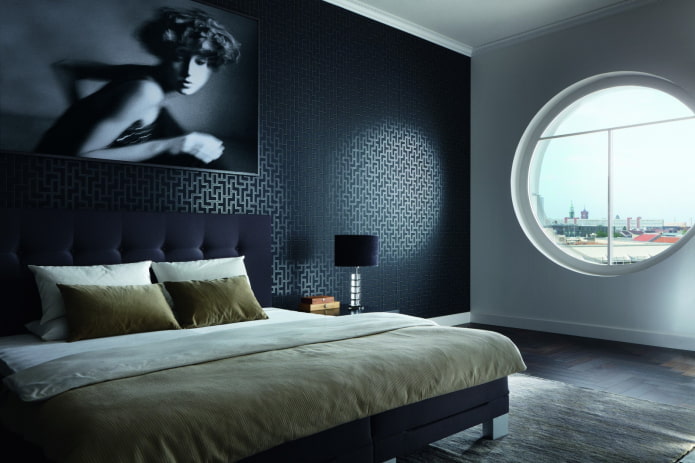
The photo shows a bedroom in a modern style with black silk wallpaper on the walls.
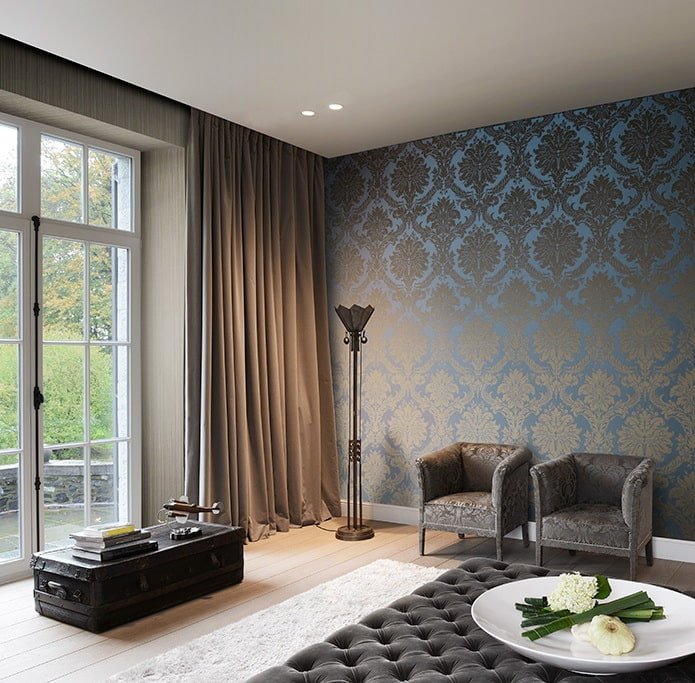

Beige
Beige is great for creating calm interiors, in which all attention is switched not to color, but to texture. Therefore, you need to very carefully select textured surfaces and their combination with each other.


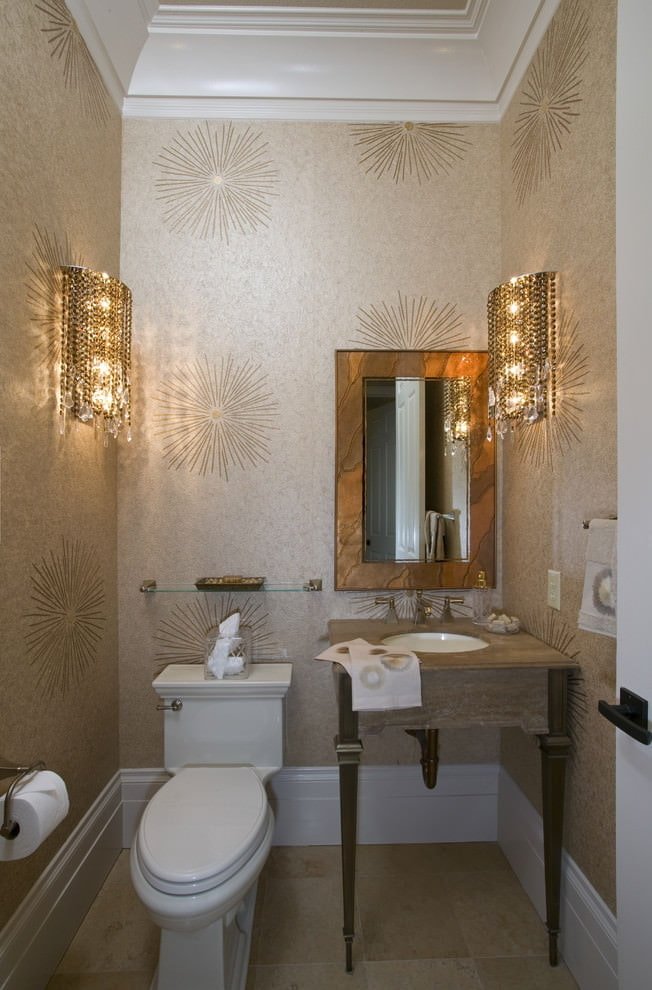
Green
Refreshing and soothing, allow you to boldly experiment with decoration. It goes best with yellow, brown and blue.
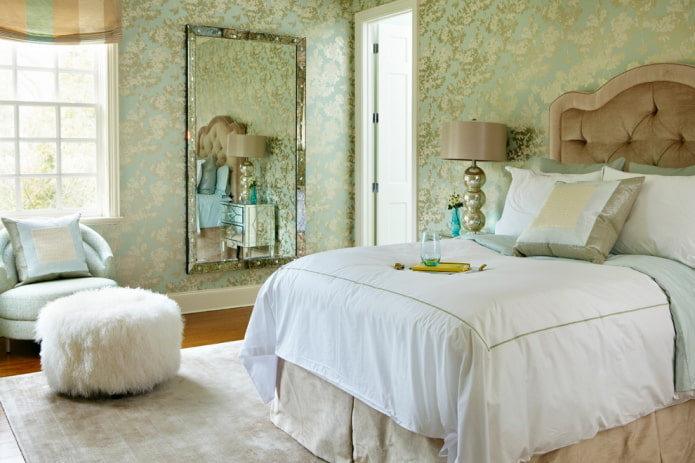
The photo shows a bedroom decorated with green silk wallpaper.
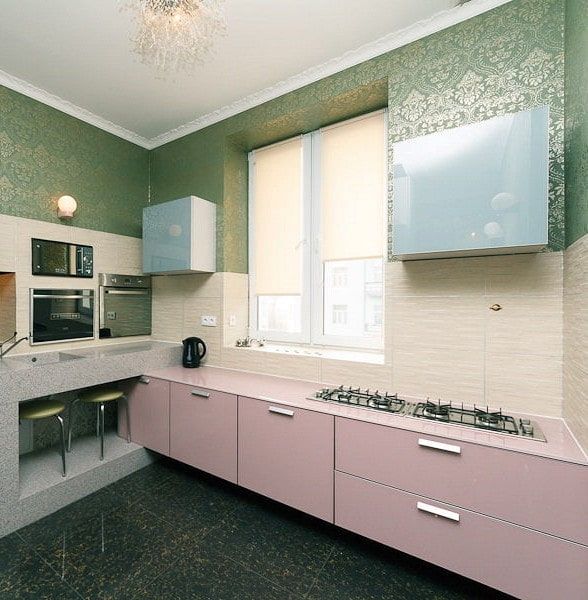
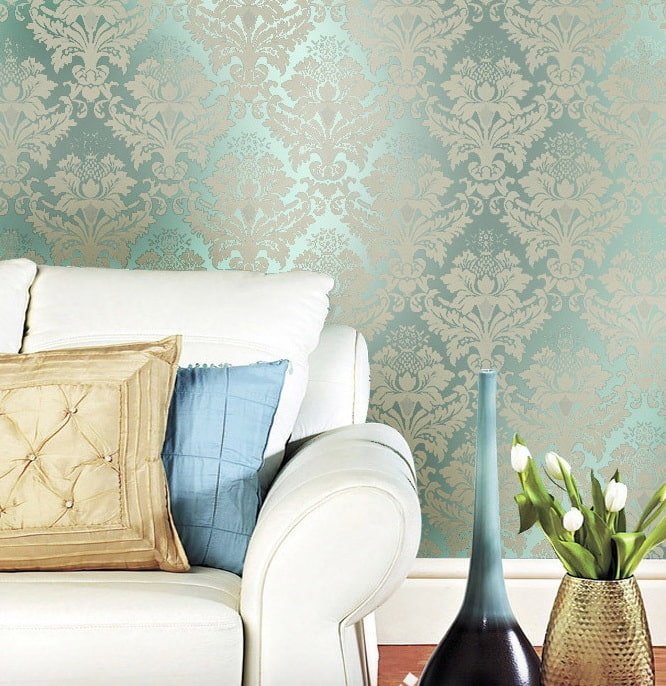
Red
They will allow you to create a rich, elite interior. In combination, it is better to give preference to black and gold.
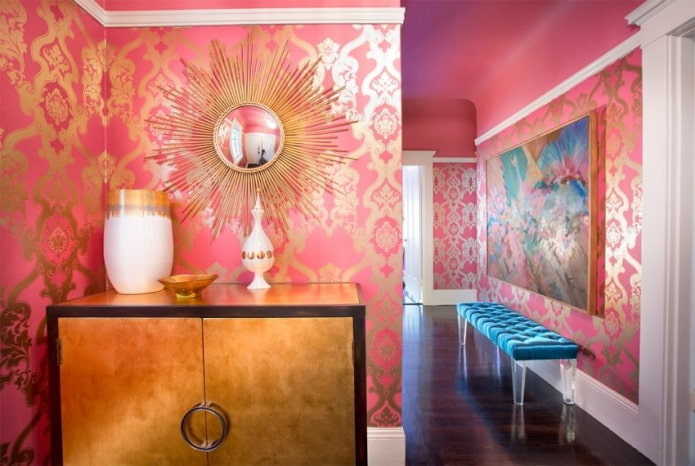
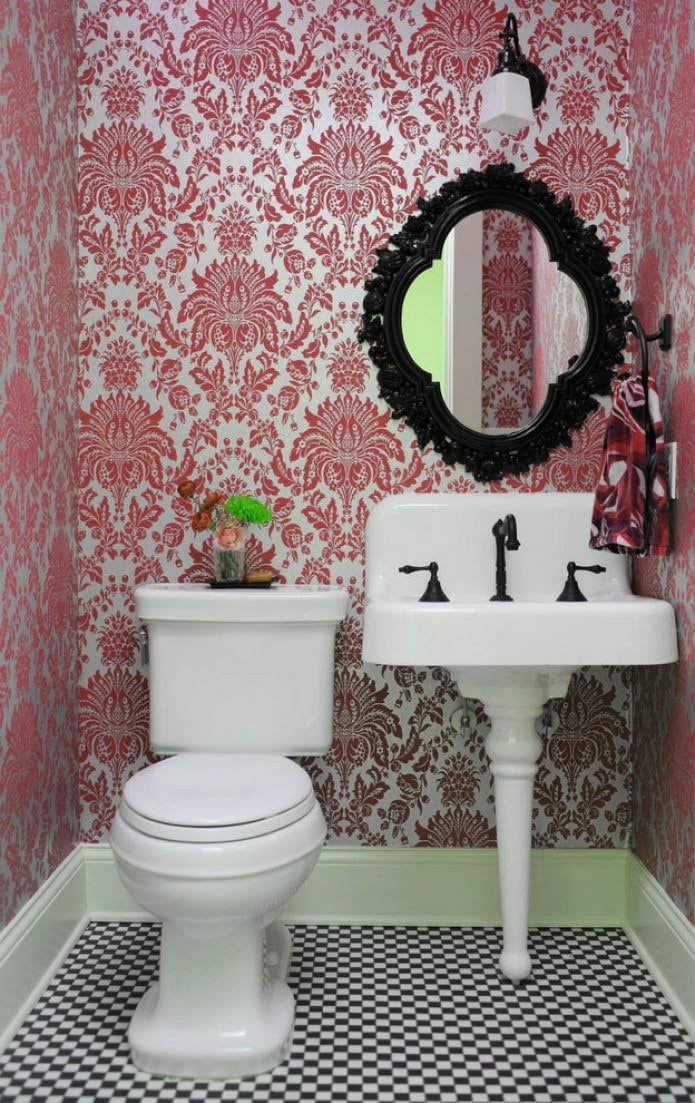
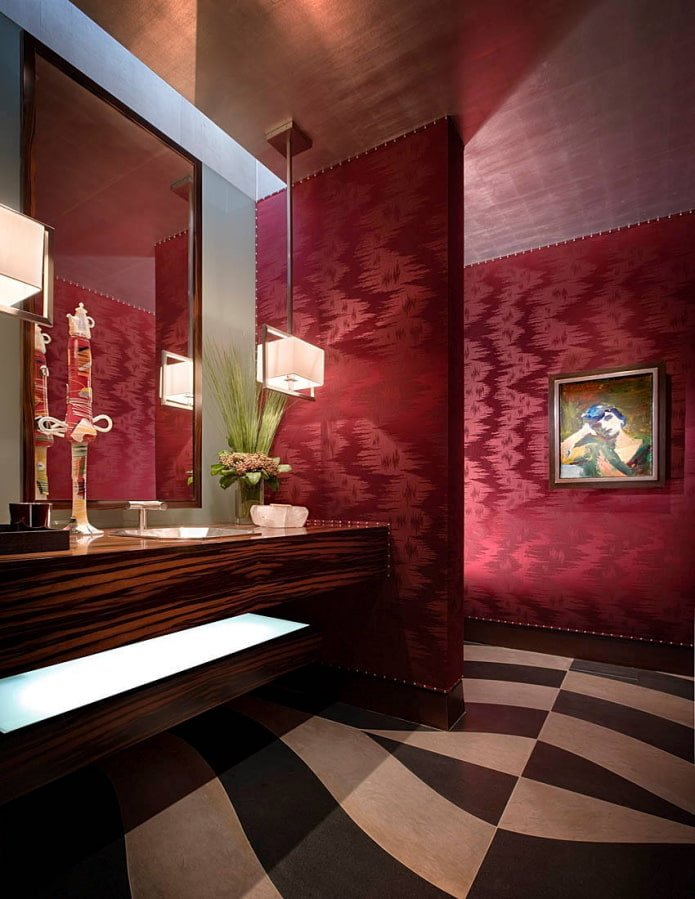
Design examples
When decorating a room, the main the goal is to make the interior authentic and fashionable.
With gold threads
They attract all the attention, attract and enchant. Gold threads will add luxury to the interior. They will be appropriate even in the minimalist style. You can complement the unique image with small lamps or candlesticks.
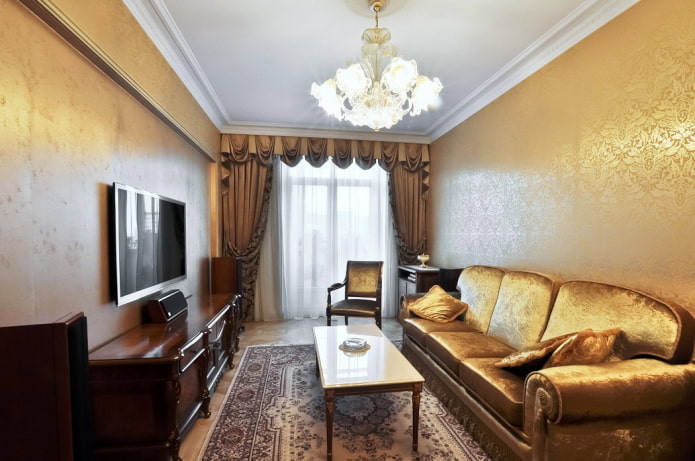
The photo shows a hall decorated with silk wallpaper with gold threads.
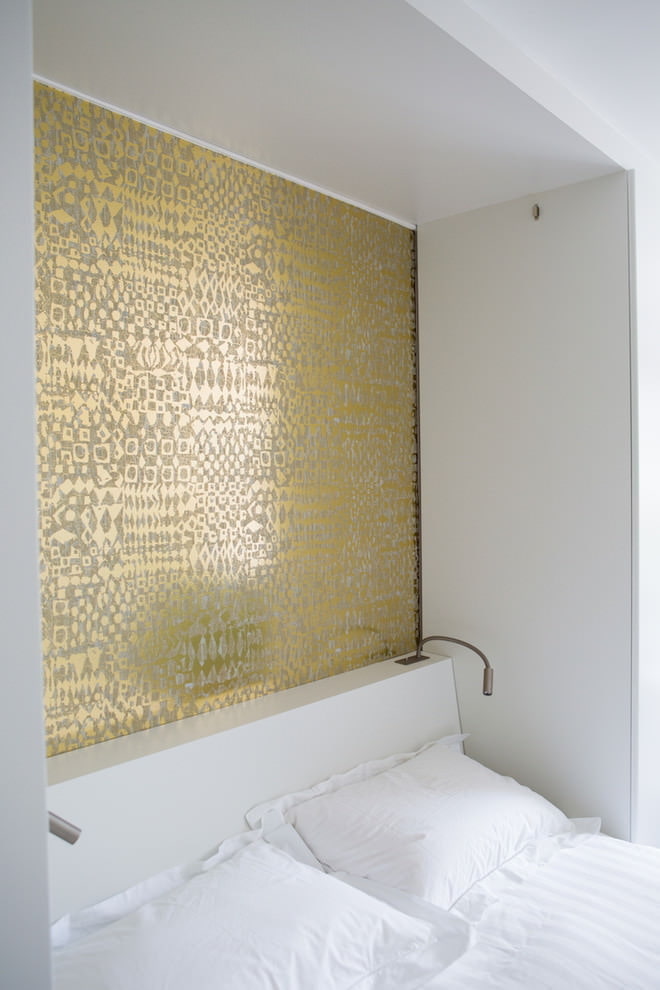
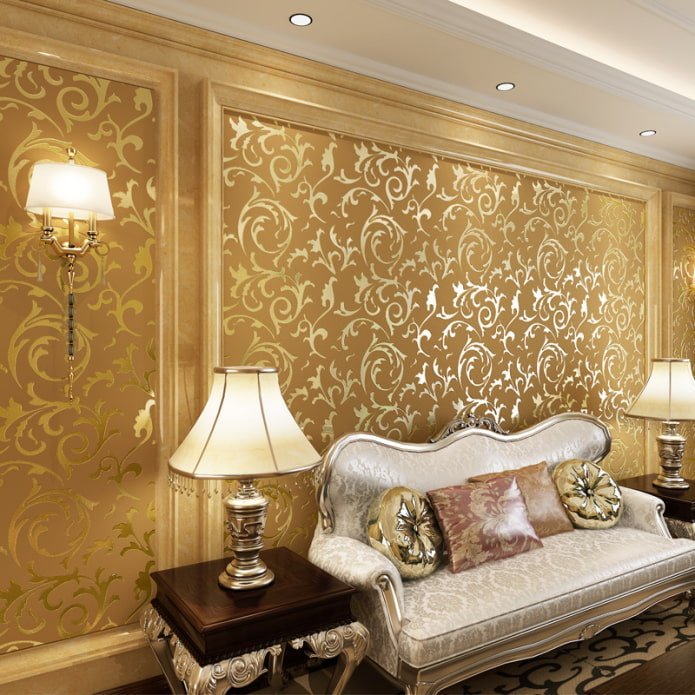
With birds
Birds are a symbol of lightness and freedom, their presence in the drawings creates a bright atmosphere, adds air and space to the room.
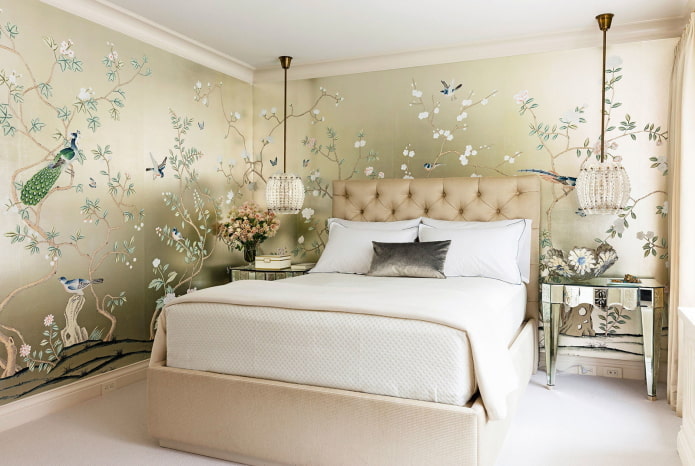
The photo shows a bedroom and golden silk wallpaper with birds.
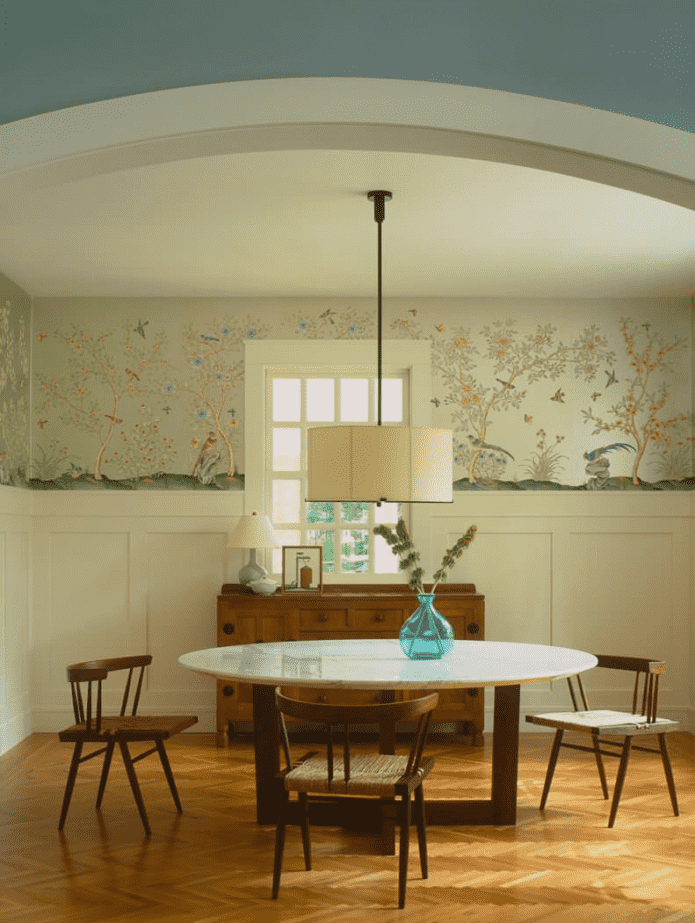
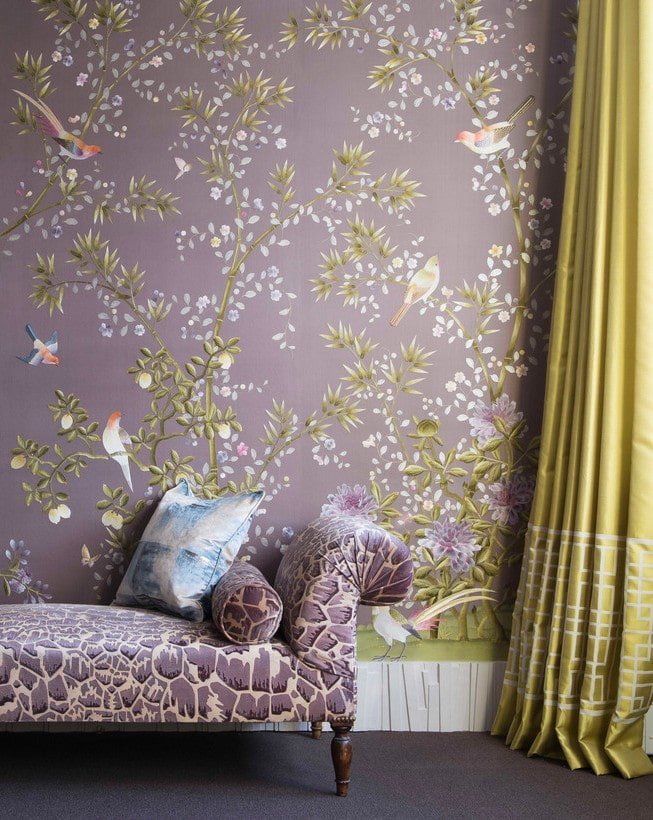
With flowers
Nothing conveys the beauty of silk like floral arrangements. This applies especially to roses, because it will be very difficult to take your eyes off the image of delicate buds on an iridescent texture.
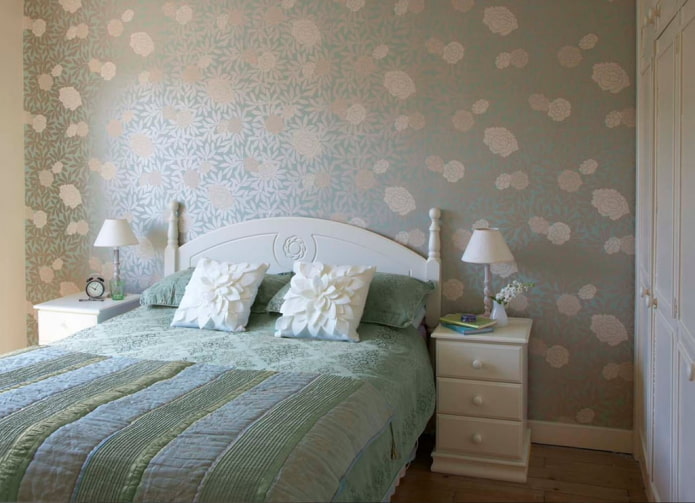
The photo shows a bedroom interior and a wall with silver silk wallpaper.
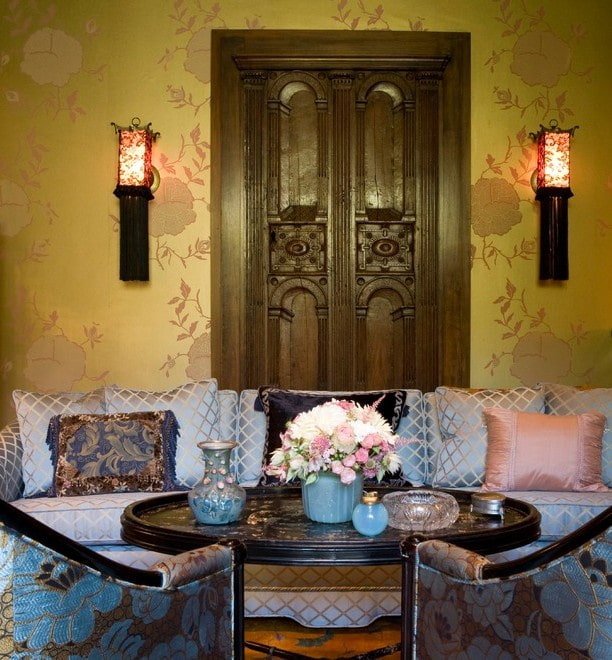
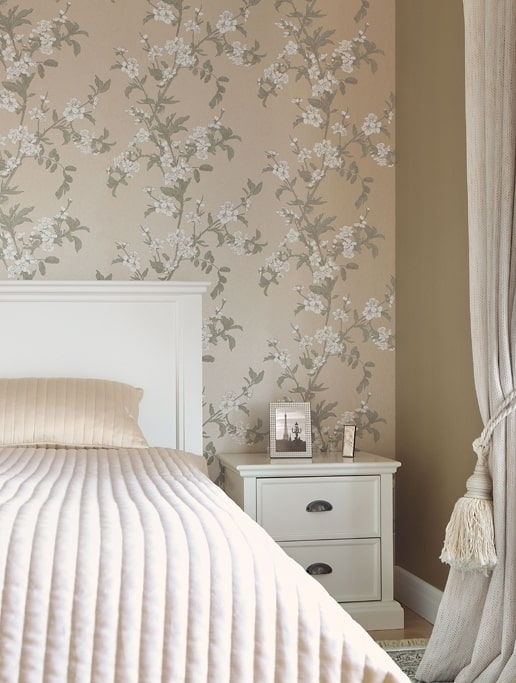
How to apply?
The correct application option depends on the type. Textile silk wallpaper is glued to a pre-prepared wall using special glue.
Which glue is better to use?
It is better to choose the glue that is indicated in the instructions on the rolls. Also suitable is high-quality vinyl glue, without dyes, with antifungal additives, intended for heavy types of coatings.
Never dilute the glue.
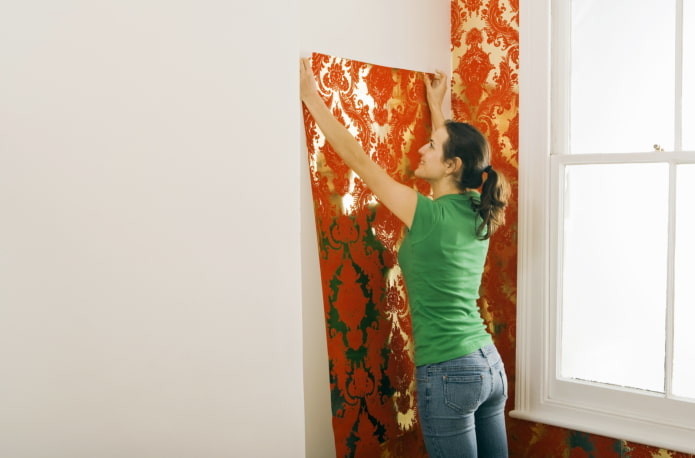
Step-by-step instructions for pasting
Pasting silk canvases is not fundamentally different from any other pasting. For an ideal result, you should do the following:
- Prepare the surface.
- Remove old paint or wallpaper from the walls.
- Align, sand the walls, apply primer.
- Mark the wallpaper and walls.
- Prepare the required amount of glue and apply it to the back of the wallpaper and the wall surface.
- Glue from the corner and make sure the pattern matches.
- Leave to dry in a warm room without drafts.
Video
Applying this material to the wall is a very important process, so in order not to spoil these expensive coatings, it is better to entrust this to professionals.
Features of care and cleaning
Require very careful and gentle care.
- To remove dirt and dust, it is better to use a soft brush and a vacuum cleaner.
- If stains appear on the surface, use a sponge or piece of cloth soaked in warm water to remove them.
- You can use a non-concentrated soap solution or detergent.
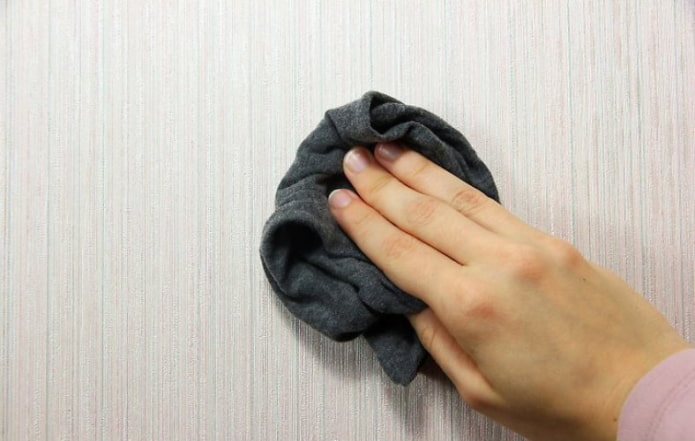
Now reading:
- Mercedes A-Class: The Epitome of Luxury and Style
- Comprehensive Guide to Purchasing Used Maseratis
- Making a lampshade yourself: 14 master classes with photos and video instructions.
- Loft style wallpaper: 45 photos of modern ideas and design solutions for the interior.
- best alternatives for replacing a wall in the interior.